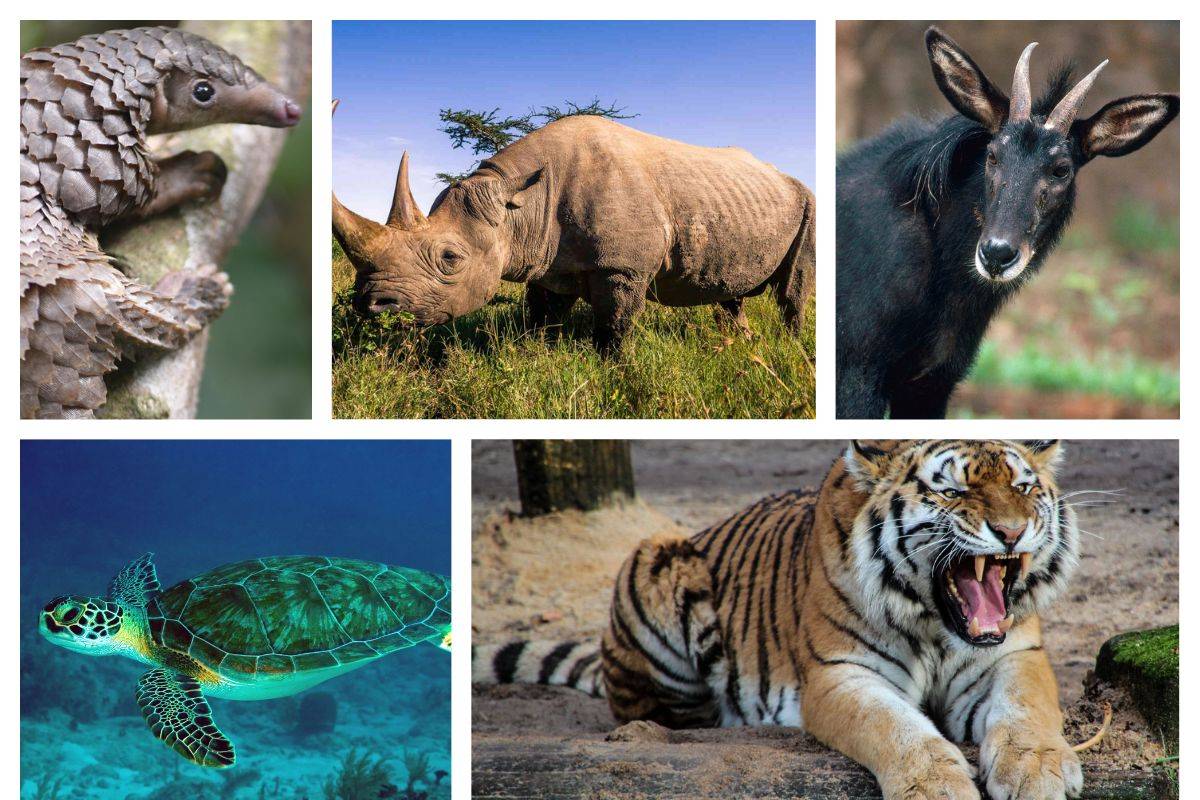
We can get everything we need from nature, and part of what makes it so rich is its enormous diversity. However, some of that is currently in danger of disappearing because of human interference with animal habitats, climate change, and the results of the illegal wildlife trade.
In the interest of money, some people believe they have no choice but to capture and slaughter the defenseless animals on this list. What species of animals are among the most trafficked worldwide? These few species are currently in danger from poaching and trafficking.
Pangolins:
In parts of Africa, Southeast Asia, and India, scaly mammals known as pangolins live as anteaters. They are traded for their scales, which are believed to treat specific ailments in traditional Chinese medicine, as well as for use as a luxury food item in China and Vietnam.
African Rhino:
African rhinos are killed by poachers for their horns, which are utilized in Chinese medicine. Due to its high value on the Asian black market, it has also evolved into a prestige symbol. The number of African rhinos presently under protection has increased thanks to conservation initiatives, but the fight continues every day.
African Elephant:
For its ivory tusks, the African elephant is sought after the most. Jewelry and other decorative goods made of ivory can be purchased for a fair price on the world's dark markets. Tens of thousands of these magnificent animals are killed each year for their tusks, according to the World Wildlife Fund.
Tiger:
In nations where tigers are present, tiger poaching is prevalent. But in India, stringent laws have significantly curbed the poaching of these creatures. Tigers are killed by poachers for their pelts, but primarily for the value of their bones, which may be converted into products like tiger bone wine and sold for a fortune in China's underground market.
Hawksbill Turtle:
Hawksbill turtles have reportedly been killed for their priceless shells for millennia, according to National Geographic. According to researchers, the creature's shell was employed in objects even by the ancient Romans. Hawksbill turtle killing has been forbidden since 1977, although it still occurs throughout Asia. Sunglasses, combs, and other items that humans adore are frequently crafted from gorgeous shells.
Green Turtle:
Additionally on the endangered list are green sea turtles. Poachers capture them and trade them for traditional remedies and religious rituals all over the world.
The green turtle's eggs are also taken from the wild and consumed, a procedure that makes it difficult for the turtle to live a life of freedom and actively reduces the turtle's population in the wild. These turtle eggs have been consumed for decades in places like Costa Rica, and the fact that the behavior is seen as a part of the local culture makes it challenging for people to stop. In general, the fact that changing human habits can be challenging makes this animal endangered.
Sumatran Serow:
You may have never heard of it, but this creature is also in desperate need of more protection. They are hunted down in Peninsular Malaysia, even though there are strong restrictions in place to prevent people from doing so. Pursued their body parts and meat, the serow is often used in traditional medicine as a “magical” ingredient. Part of the problem is that the Sumatran Serow has flown under the radar for some time now, and conservationists have not paid it as much attention as they have to some other species.
Orangutan:
Why are orangutans used as commodities? For their meat, these animals are slaughtered. (Some claim it is tough but delicious.) Orangutans are occasionally captured in order to be traded for expensive exotic pets. Currently, orangutans are in danger all around the world. It is not a good time to be one of these guys on Earth, sadly, as they face everything from trafficking to having their natural habitat destroyed to make room for palm oil plantations.
-
What is the most traded illegal animal?
Pangolins
-
What is the meaning of animal trafficking?
The unlawful trading, smuggling, poaching, capture, or collection of threatened or protected species, their derivatives, or goods is known as wildlife trafficking. This includes animals or plants that are subject to harvest quotas and are governed by licenses.
-
Is trafficking legal in India?
Any act of physical or sexual exploitation, slavery, or acts that are akin to slavery, and servitude were all considered to be trafficking offenses under Section 370 of the Indian Penal Code (IPC).
-
What animals are trafficked in India?
Sea horses, birds, pangolins, and Indian Star tortoises are a few of the species that are frequently traded.
-
Why is animal trafficking a problem?
Wildlife trafficking jeopardizes safety, impedes economic growth, and challenges the rule of law. Numerous species are being decimated by the illegal wildlife trade, and iconic animals like tigers, elephants, and rhinoceroses are in danger of going extinct.
















